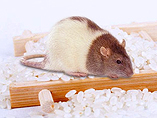
 During the past several years, there has been an increasing public awareness of mental illness and their societal and health consequences. Eating disorders represent one of the most damaging groups of mental illnesses. Current estimates are that anorexia nervosa claims the life of an astonishing 10-20% of patients, and increases mortality rate by 6-fold. Based on these figures, anorexia is the single most deadly mental illness1.
During the past several years, there has been an increasing public awareness of mental illness and their societal and health consequences. Eating disorders represent one of the most damaging groups of mental illnesses. Current estimates are that anorexia nervosa claims the life of an astonishing 10-20% of patients, and increases mortality rate by 6-fold. Based on these figures, anorexia is the single most deadly mental illness1.
Another surprising fact about eating disorders is that risk of anorexia and bulimia appears to be about 50% attributable to genetics2. Despite this, there has been little progress toward identifying specific biological factors which are causal for eating disorders. There is good news, however, as some recent studies using animal models are beginning to provide much-needed insight into these complex and tragic illnesses.
Researchers from Columbia University have reported a mouse model that recapitulates many aspects of human anorexia nervosa, including patterns of disease onset and self-imposed dietary restriction (sometimes even to the point of death)3. Madra and Zeltser focused on several environmental and genetic factors which are believed contribute to anorexia. They found that by combining caloric restriction and social isolation in adolescent female mice carrying a BDNF-V66M mutation, they could generate anorexic behaviors. Around 40% of mice with all four of these risk factors displayed symptoms of anorexia nervosa. By systematically varying the environment and genetic factors, they were able to interrogate how each factor contributed to abnormal feeding behavior in their mice. For example, they found the BDNF-V66M genotype and caloric restriction significantly increased the anorexic behaviors, but only if feeding was restricted during a specific window of development. They also found that handling of the juvenile mice was able to extinguish anorexia, leading to healthy feeding.
Cyagen Biosciences can help you harness the experimental power of animal models in your own research. We provide custom mouse and rat models, including transgenics, knockouts and knockins, CRISPR/Cas9 and TALEN genome editing, as well as custom virus packaging, stem cells, and cell culture reagents. Our VectorBuilder platform allows you to design and order custom DNA constructs specific to your experimental needs. Choose from lentiviruses, adenovirus, AAV, shRNA expression vectors, CRISPR/Cas9 vectors, and more!
We will respond to you in 1-2 business days.